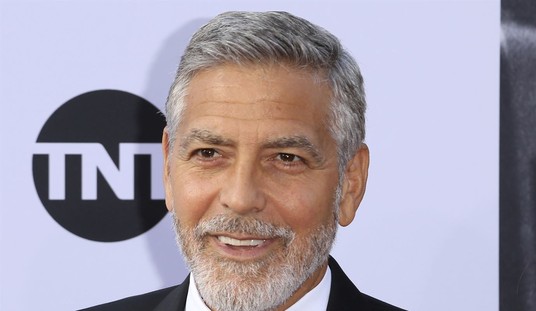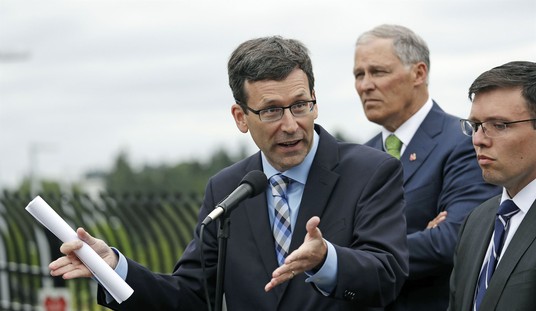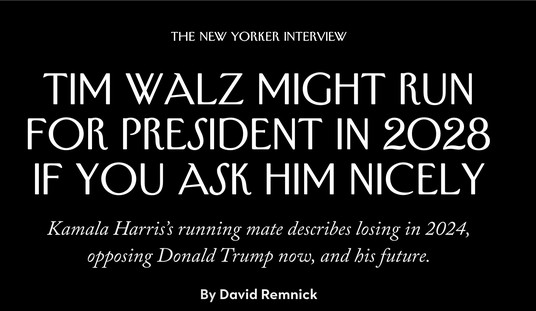Once again, the chief executive has control of the executive branch. And once again, the Supreme Court has reminded its inferior courts that they don't.
A district court in Boston had issued an injunction preventing Education Secretary Linda McMahon from implementing a downsizing plan that would reduce staff by almost forty percent. The Trump administration appealed the decision and sought a stay. The First Circuit accepted the appeal but declined to stay the injunction, leading to an appeal to the Supreme Court. This afternoon, the full court stayed the district court's ruling while the appeal continues -- meaning the layoffs can take place immediately:
A divided Supreme Court has cleared the way for the Education Department to fire almost 40 percent of its workforce four months after President Donald Trump ordered his administration to begin closing down the department.
The justices, by an apparent 6-3 vote announced Monday, lifted an injunction a federal judge in Boston granted in May against the firings. That judge found that the staff cuts were so drastic they would prevent the department from carrying out duties mandated by Congress. He also said the mass firings appeared to be part of Trump’s plan to eliminate the Education Department entirely, despite a lack of congressional authorization to do so.
Trump, who pledged during the presidential campaign to abolish the department, signed an executive order in March directing the education secretary to “facilitate” its closure. But the administration has claimed in court that the layoffs being challenged in the case are aimed at greater efficiency and are not part of a bid to fully eliminate the department.
This does come as a small surprise, at least. The dissenters objected in a written opinion based on statements from Donald Trump and others that the layoffs were a prelude to unilaterally shutting down the Department of Education. Since it exists by statute passed by Congress, Trump cannot unilaterally shut it down, and Justice Sonia Sotomayor argued for the minority in the 6-3 order that the courts have the authority to prevent illegal acts:
Only Congress has the power to abolish the Department. The Executive’s task, by contrast, is to “take Care that the Laws be faithfully executed.” U. S. Const., Art. II, §3. Yet, by executive fiat, the President ordered the Secretary of Education to “take all necessary steps to facilitate the closure of the Department.” Exec. Order No. 14242, 90 Fed. Reg. 13679 (2025). Consistent with that Executive Order, Secretary Linda McMahon gutted the Department’s work force, firing over 50 percent of its staff overnight. In her own words, that mass termination served as “the first step on the road to a total shutdown” of the Department. Dept. of Ed., Press Release (Mar. 11, 2025); infra, at 7.
When the Executive publicly announces its intent to break the law, and then executes on that promise, it is the Judiciary’s duty to check that lawlessness, not expedite it. Two lower courts rose to the occasion, preliminarily enjoining the mass firings while the litigation remains ongoing. Rather than maintain the status quo, however, this Court now intervenes, lifting the injunction and permitting the Government to proceed with dismantling the Department.
Generally speaking, this is a valid argument. It's one reason why it pays to be careful when making public statements on matters such as these. Normally, the executive has full authority to reduce staff as seen fit, but not for the purposes of shutting down agencies that operate with enabling statutes from Congress. That seems to be what made the district court intervene in this plan, and is likely why the First Circuit refused to issue a stay.
Well, that's one reason, but the other is more mundane. The purposes of temporary injunctions usually include a finding that the party seeking relief is likely to prevail on the merits, and that said party/parties will suffer irreparable harm unless the court intervenes. And here, the harm is obvious and acute: a lot of people will lose their jobs. If the courts rule that the actions of McMahon and Trump are illegitimate and appeals hold up that ruling, it will happen far too late for these parties to seek relief without an injunction allowing them to continue their employment during that process. The First Circuit could just be playing it safe by refusing an injunction.
The majority did not provide any explanation of their reasoning on this issue. However, considering the balance of potential harms, the six justices who imposed the stay must think that the Trump administration is likely to win on the merits when the case makes it to their court. And why not? As chief executive, Trump does have the authority to resize inferior agencies, as long as he complies with their enabling statutes and any other statutory requirements Congress has passed regarding their function. Even if he's talking about eliminating these agencies in the long haul, that's hardly a criminal conspiracy, as Sotomayor suggests; it's a political position and a widely-held one at that.
This is an interim ruling, but it's a very clear signal that six justices on the Supreme Court are getting very tired of having 677 supervisors on presidential policy. Finally.








Join the conversation as a VIP Member